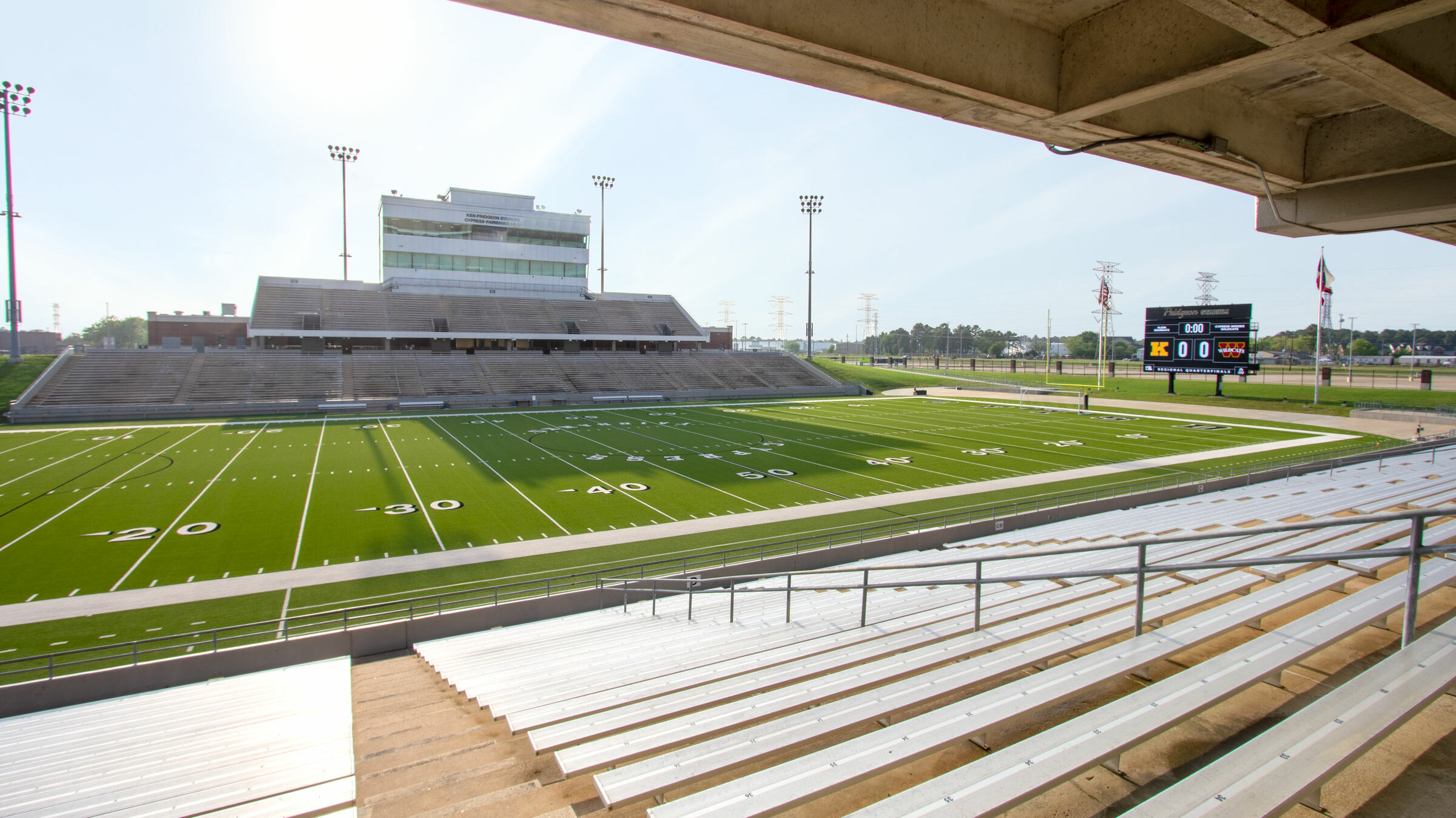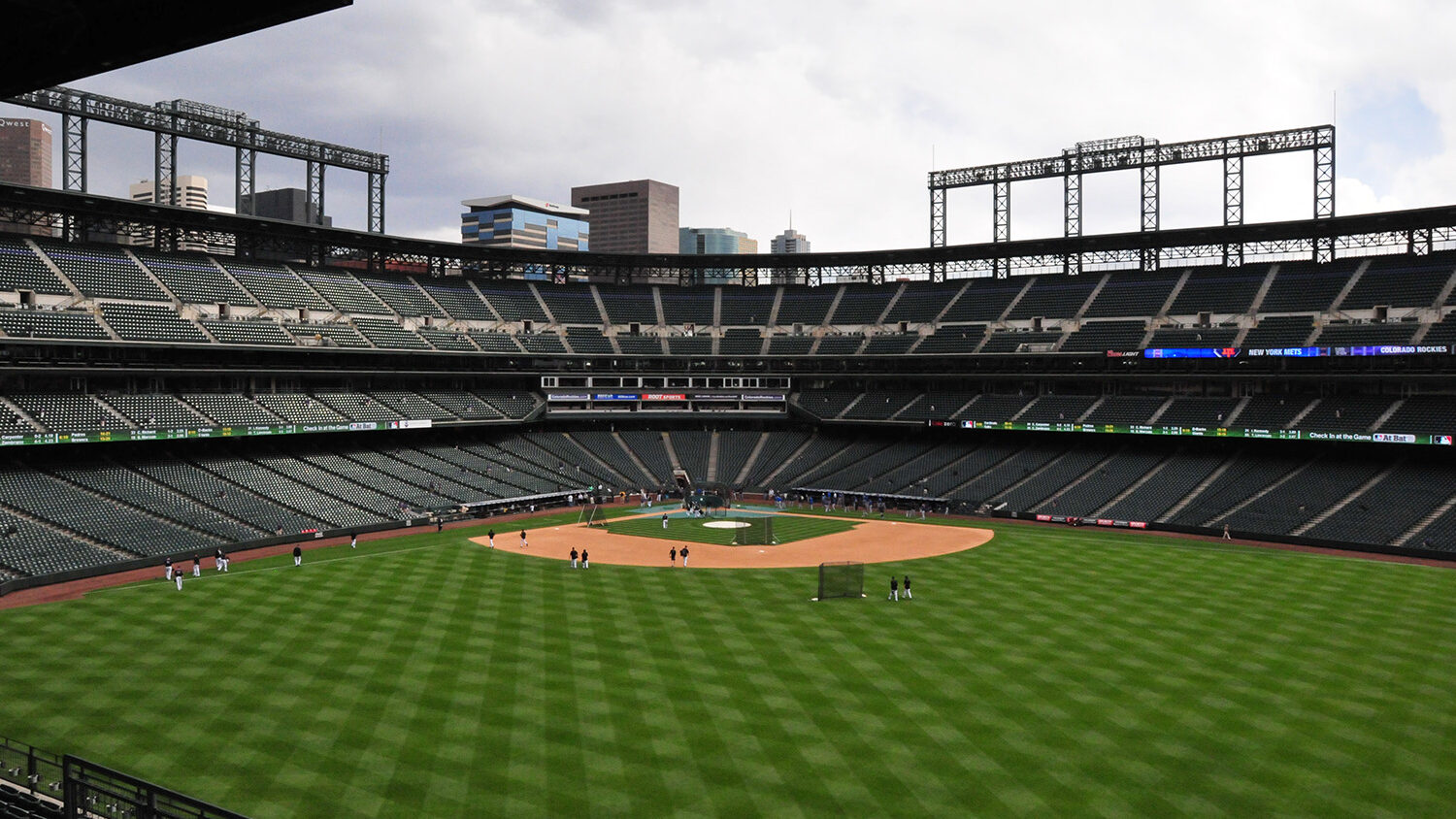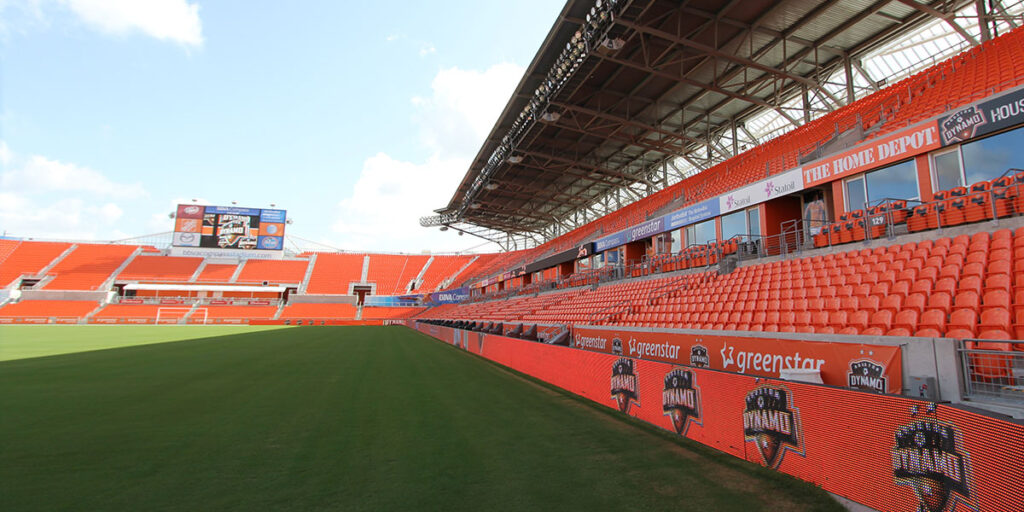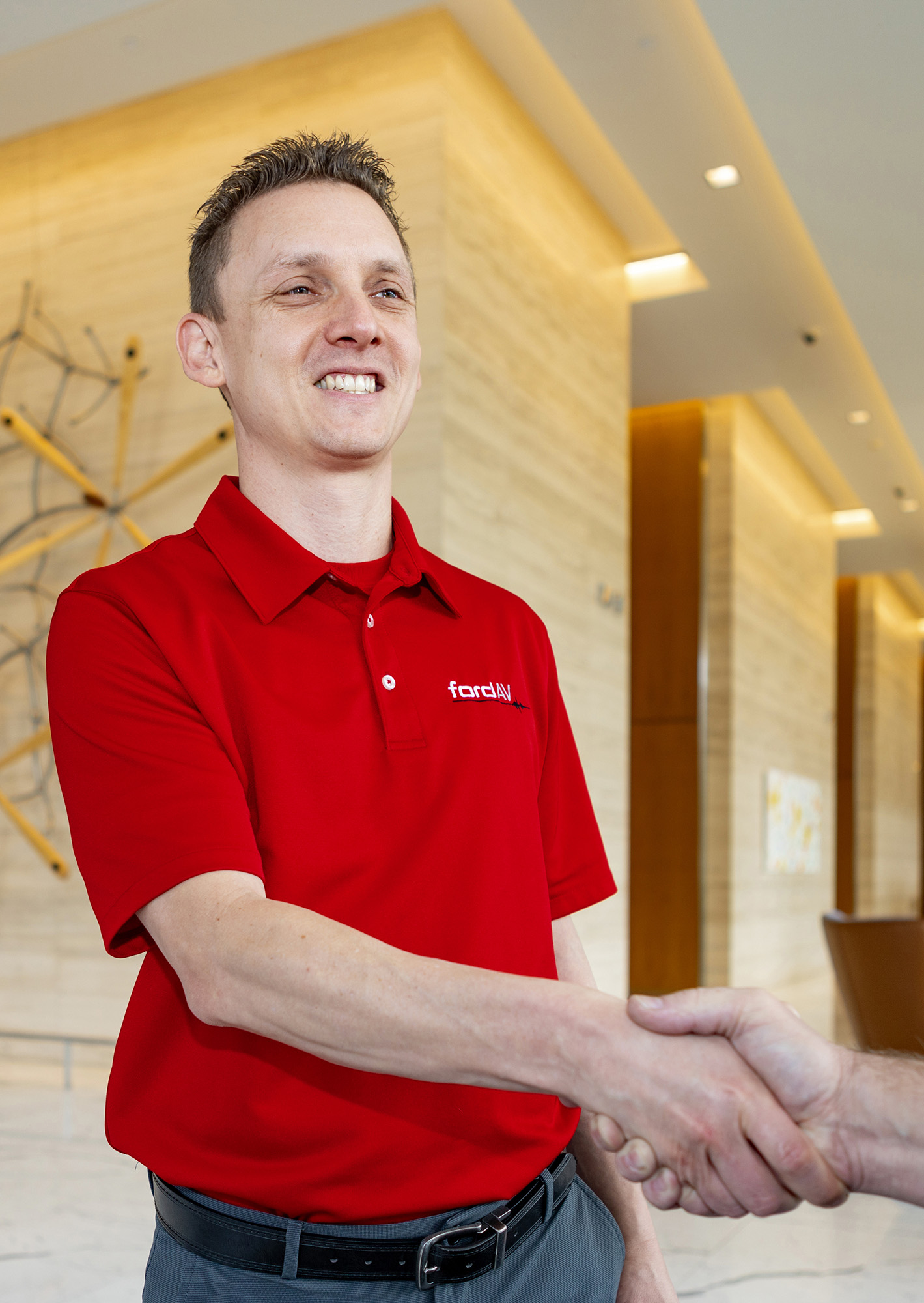
Upgrading a stadium AV system requires tackling complex integrations, managing high channel counts, and ensuring performance throughout every event. With decades of experience modernizing large-scale venues, Ford AV brings the engineering expertise and project rigor needed to streamline audio, video, lighting, and control upgrades with minimal downtime and maximum scalability.
Explore how Ford AV tackles complex technical challenges, and then dive into the core systems shaping the future of stadium AV.
Real-World Implementations
Ken Pridgeon Stadium (Cypress, Texas)
During a severe Deep Freeze in Texas, the entire video and audio system in the press box was rendered inoperable due to burst pipes. With only a few months before the football season resumed, the stadium faced the monumental task of replacing all critical systems under tight deadlines.
The project involved installing brand-new racks, amplifiers, sound consoles, and an advanced video system. This rapid yet meticulously executed overhaul allowed the stadium to not only recover but also elevate its capabilities.
Supporting 12 different high schools, the new system offers unparalleled customization allowing each school to tailor the audio mix and video display fonts to meet its unique identity and preferences.
Shell Energy Stadium (Houston, Texas)
At Shell Energy Stadium, Ford AV transformed the control room into the central hub of operations that powers the atmosphere for Dynamo games, Texas Southern University football, and international events.
In the control room, operators manage every video display across the facility, including in-house monitors, the main scoreboard, and a variety of supplementary screens. The room is equipped with three hard-fixed cameras and a wireless camera. With the aid of a production switcher, dual replay channels, and clip servers, every pivotal play is instantly relayed to an audience of 22,000 fans.
A distributed audio system ensures every fan hears the crisp, clear sound. From motion graphics and crowd prompts to in-game features and sponsor messages, every element creates a comprehensive and immersive stadium experience.
Coors Field (Denver, Colorado)
Ford AV led the conversion of the ballpark’s legacy analog video routing and control into a digital system. Legacy routers and distribution amplifiers were decommissioned in favor of a redundant, low-latency Ethernet network.
This digital foundation not only improved signal integrity and scalability but also positioned Coors Field to adopt future 4K, HDR, and immersive-media technologies.

Stadium AV System Components
Lighting Solutions
Stadium lighting balances dramatic ambiance and stringent safety requirements. Dynamic LED fixtures offer programmable color effects and scene presets that match team branding or highlight game-day moments, all while consuming less power than legacy systems. Field and perimeter lighting ensures visibility for players and officials during day-into-night transitions, and dedicated emergency lighting systems remain operational under power-loss conditions, guiding spectators safely in critical situations.
Video Systems
Modern stadiums rely on a layered video infrastructure to create dynamic, immersive experiences. High-definition LED video walls and interactive kiosks serve as focal points for replays, player statistics, and advertising. Ribbon boards and digital signage deliver real-time data such as scores and timing. Instant-replay systems, driven by multi-camera configurations and slow-motion servers, elevate the spectator experience by capturing moments from multiple angles.
Audio Systems
A reliable, high-quality stadium sound system delivers score announcements, live commentary, and halftime music with clear fidelity to every seat. Distributed sound systems, employing line arrays or array speakers, ensure even coverage across expansive seating bowls, while directional sound solutions and beam-steering technology reduce unwanted reflections and enhance speech intelligibility. Integrated voice-alarm systems provide a fail-safe for emergency communications, ensuring critical announcements cut through the noise in any situation.
Control Systems
Coordinating audio, video, lighting, and automation across a large venue requires a centralized, intuitive control platform. Advanced AV control systems provide a single interface for real-time management of all subsystems, with remote-management capabilities that allow technicians to monitor performance and troubleshoot issues from any location. Automated scheduling tools can queue video content, audio announcements, and lighting sequences, so the show runs on time and in sync.

Partner with America’s Leading AV Technology Company
Whether you’re upgrading legacy analog systems, recovering from unexpected failures, or planning a brand-new venue, Ford AV brings the systems-engineering expertise and project rigor needed to deliver reliable, scalable, and immersive stadium AV experiences.

- 50+ Years of Experience – Designing and integrating innovative audiovisual systems for organizations across multiple industries.
- Nationwide AV Services – Local teams supported by a national network for dependable AV installation, maintenance, and ongoing support.
- Comprehensive Expertise – From collaboration rooms and video conferencing systems to digital signage, enterprise control systems, and managed AV services.
- Scalable, Future-Ready Solutions – Engineered for reliability, flexibility, and seamless user experiences.
- Proven Performance – Trusted by Fortune 500 companies, universities, government agencies, houses of worship, and more.
Ready to connect with Ford AV professionals? Fill out the form below to transform your space with expertly designed and integrated AV technology.






